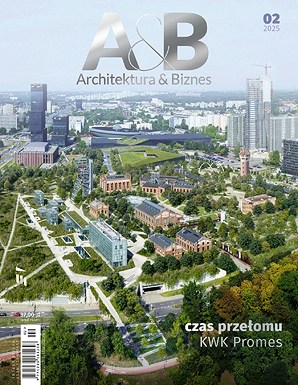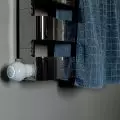What actions should be taken to build a strong position for architects in the design and implementation process, and what should be SARP's role in this? - we ask Jakub Krzysztofik, president of SARP Branch Łódź and founder of the 3DARCHITEKCI z wizją studio.
In order to answer this question, it is first necessary to determine what are the basic barriers today that weaken the role of the architect in the design and investment process. I would like to focus only on selected aspects. In this text I do not postulate changes in legal regulations, but only draw attention to existing opportunities that are often not used by young or less experienced architects. And they should be used to counteract the negative impact on our professional environment. From my observations, it seems that both contractors and investors are trying, by design, to reduce the influence of the architect on decisions during design. How do they do this? By bending or outright violating construction law. I will point out some basic ways of manipulation and methods on how to deal with them.
For the purposes of this text, I will focus only on the construction implementation process. The nature of my statement is purely practical, without reference to specific regulations, in order to highlight the basic problems and perhaps provoke discussion and exchange of opinions and experiences, which I will return to in the conclusion.
In the investment process, there are only three persons performing independent technical functions (they are authorized): Designer, Supervising Inspector and Construction Manager. Only these persons, and no others, are authorized to make decisions in the construction process. These decisions must be expressed in writing in the form of drawings, correspondence and in entries in the construction log.
designer
In the case of the projects we are talking about (cubic objects), it is worth remembering that the designer is a single-person architect, who is responsible for all project documentation and all members of the team. A big responsibility, but also a lot of power. No decision of the design team (constructor, installers or assistants) can be implemented without the authorization of the designer (architect), who is often referred to as "chief designer." No change in the documentation can take place without the approval of the designer. It resolves - qualifies changes as non-substantial or substantial (those cause the need for replacement documentation). It is enough to enforce this.
supervisory inspector
He is appointed by the investor and it is at his request that design changes can be made. He supervises, on behalf of the investor, the correctness of construction and its compliance with the design documentation. The investor, through him, can make changes to the construction site. The investor's request must be expressed in writing and, at the very least, substantiated and approved by the supervisor.
construction manager
Is responsible for the implementation of construction on the basis of the documentation provided (construction, technical and detailed design). He maintains construction documentation, including as-built documentation (makes changes) and declarations of conformity of construction materials used. Also, he can request changes to the project and ask the designer to qualify whether the changes are significant.
most common construction abuses:
1. failure to notify the designer of the start of construction.
On the first page of the construction log there is a box where the architect enters his data and the date when he began to undertake supervision. Often, failure to notify the designer is a deliberate attempt to limit the designer's role on the site.
Recommendation: the architect should monitor the construction that has begun (it is worth including such a provision in the contract with the investor) and make an entry in the construction log himself. It is also worthwhile to regularly inspect the construction site on one's own initiative and record visits in the construction log. The designer has an unrestricted right to enter the construction site and access to the construction log, where he can make entries.
2. the maintenance of construction records, correspondence by persons other than the construction manager and superintendent - site engineers, project managers, etc.
In effect, it is forcing activities on the designer by people who are not authorized to do so or who do not perform independent technical functions on the site. In the event of problems or conflict with the investor, the architect is in a difficult position, since no one but him is formally responsible, in light of such documents, for the situation on the site. Such a practice is often carried out deliberately in order to limit possible liability by the contractor and the investor, and to place the burden on the architect and other designers. These unauthorized persons often resort to unauthorized pressure on designers, better or worse camouflaged threats and blackmail. This type of behavior cannot be afforded by the construction manager or supervisor, because they are bound by construction law and the engineer's code of ethics, so they willingly push out to "do the dirty work" unauthorized persons, who can only be brought for unauthorized practices before the courts of law, which is significantly more difficult and time-consuming. In the event of correspondence with unauthorized persons, it is more difficult for the designer to enforce additional fees for the work performed.
Recommendation: the architect should demand that every correspondence, every application be signed by the superintendent or construction manager and be in writing. He has the right not to respond to any other correspondence, especially those signed by persons without authority. The architect should not deliver any additional drawing or decision to the construction site without a written request from the manager or inspector. Such letters can be the basis for requesting additional payment for design activities, and the supervisor or construction manager can also be charged directly for them (treat their requests as a kind of order or assignment). In the case of verbal threats, pressure, it is worthwhile to immediately make memos and ask for written confirmation by the persons who issued them, and then notify the investor or other relevant entities (general, disciplinary or collegiate courts).
3. accusing the designer of poor quality of design documentation by the contractor even before construction begins
In order to force changes on the designer or to lower the designer's role, prestige and confidence, the contractor often reports countless alleged errors and inaccuracies in the design documentation already at the beginning of construction. This is calculated to lower the prestige of the architect, to undermine his confidence with the investor and to emphasize how good the contractor is and how steadfast he is in solving execution problems on his own. In the course of construction, it often turns out that these are not mistakes, but justifiable decisions agreed with the investor, and the contractor in the course of implementation has to step by step retract his arbitrary and unjustified decisions, admitting that he was superficially acquainted with the documentation and tried to instrumentally bring about the most convenient solutions for himself.
Recommendation: take suggestions calmly and calmly defend the solutions adopted. For each objection, you can ask for written justifications and a full analysis signed by an authorized person (construction manager) and another architect who will sign such modifications with his name. In my experience, such documentation has never yet appeared, which does not mean that errors in the design can not occur. At the end of construction, often the same contractor has many humble requests to the designer to clean up the as-built documentation, and one can then calmly return in conversation to the initial allegations against the design office.
4 Attempts to charge the architect for alleged design errors and resulting financial damages
As design error insurance becomes more widespread (it is, of course, a much-needed instrument), the number of legitimate and unsubstantiated claims against designers is increasing. First of all, I would like to warn against the unauthorized practices of contractors or investors who want to make themselves an additional source of income from design insurance. They try to intimidate designers with threats to refund alleged design losses through design errors. The basic principle is that damage does not arise when the investor or contractor would have had to bear the costs associated with the disputed scope anyway. A design error that causes damage is when an additional defect created during construction has to be corrected. For example, a missing item in a cost estimate or statement is not a damage. An error occurs when you have to dismantle an incorrectly sized door or window, or demolish a poorly designed staircase. It is also worth remembering the co-responsibility of the construction manager and superintendent, who, before the start of construction, declare that they have read the project documentation and, if they do not make comments, share responsibility for the situation.
Recommendation: It is worth having good insurance with clauses that increase coverage to include errors of subcontractors of fire, health and safety, sanitary experts, and errors of surveyors and geologists.
Currently, the system offered by the IARP is relatively inexpensive, and it is worth discussing greater coverage with your advisor. Well-configured insurance strengthens the architect's position during the course of an investment, and peace of mind about his and his family's future is priceless. It is not worth saving money on this. In a critical moment, an architect who has a solid policy will not be easily intimidated.
5. accusations of collusion with manufacturers and violations of the Public Procurement Law
Architects working in the public procurement market are often pressured to substitute materials chosen in the project. Often, too, in case of resistance, they are accused by contractors of secretly contracting with manufacturers of construction materials and accepting commissions for their use. There are construction companies whose strategy is to subvert accepted solutions and intimidate or bribe architects. There are also manufacturers who slip such agreements to designers.
Recommendation: It is not worthwhile to enter into any commission agreements with manufacturers of building materials. If commercial consultants help us with the design (they have this built into their costs), it is possible to include their solution in the design, provided that equivalent solutions are allowed. It is also good to specify in the case of a particular brand also other reference brands. It is worth informing the investor about this for the sake of the quality of subsequent execution, and also declare in writing that the architect is not bound to a particular manufacturer by any financial agreement. At the stage of implementation, you can then enforce quality and use these documents to defend the solutions adopted and protect yourself from accusations of dishonesty.
6. vulgar and untactical behavior on the construction site and during meetings
I don't know why, but at the construction site and often also at the deliberations during it there are completely different cultural rules than in the design offices. By this I mean, first of all , vulgar language, indecorous jokes, disregard for women, who are still in the minority on construction sites (but mostly in design offices). In my experience, requests to maintain culture do not work.
Recommendation: It is worthwhile to take care of the level of language used on the construction site and the culture by proposing remote participation of the other members of the project team. Even if we do not record the meeting, the mere use of electronics for communication allows not only to curb undesirable behavior, but also a better and cheaper way for other team members to conduct supervision. In the case of the use of foul language, you can also offer to record statements in order to develop a written position from the discussion. This is usually effective in discouraging disregard for the rules of culture and good manners. It is sometimes worthwhile to make a written note or make an entry in the logbook, accurately quoting the words heard with a request to comment or justify the content of the statement.
7 Threat of copyright revocation and making unauthorized changes to the project.
Often in the case of disputes at the construction site, the investor or contractor claim that the designer has transferred copyright to them and they can make changes to the project against the wishes of the author. Leaving aside cases of legitimate claims (lack of cooperation with the design office, its bankruptcy or the death of the author), I want to focus on cases of unfair pressure on the designer to make changes because he or she has transferred the copyright anyway. This approach is rarely based on legal analysis, it is mainly based on psychological pressure.
Recommendation: it is worth asking for a written legal basis for the design changes. In addition, in the case of the architect's refusal, someone must formally apply these changes. Then it's worth informing the construction manager and inspector of their responsibilities (construction law, copyright law and the engineer's code of ethics) and the simple fact that they don't have the proper construction licenses for architectural design. This usually stops overzealous change applicants from making unauthorized changes.
To summarize this brief catalog: It is worthwhile to be well acquainted with the regulations governing investments and to use them skillfully. As architects, contrary to appearances, we are not in a lost position. Any unauthorized practices are good to include in formal notes and entries in construction logs. In the case of blatant violations, you can notify the construction supervision and the ombudsman for professional responsibility of the chamber of engineers. It is worth sharing and exchanging experiences at community meetings. This is where I see a task for SARP and the Chamber of Architects - to lead discussions on practical ways to deal with practices that stand on the edge of the law. The experience of each of us architects can be enriched by the experience of our colleagues. This is how, among other things, I see the role of SARP in building a strong position for architects. This is what #SARPmyDreams is all about. I invite you to discuss the issues I raised (this is not a closed list). Finally, I will share a reflection. My greatest pleasure is the firm grasp of a bricklayer's rough hand on a construction site. When entering its premises, it is good to greet all the workers. There is, I think, no better way to build your position and image with the investor and contractor, but also with everyone involved in the construction. After all, the appearance of our building depends on the bricklayers, reinforcers or plasterers. It is worth remembering that.
Jakub KRZYSZTOFIK
more: A&B 09/2024 - CITY, ARCHITECTURE, CAPITALISM,
download free e-publications of A&B














